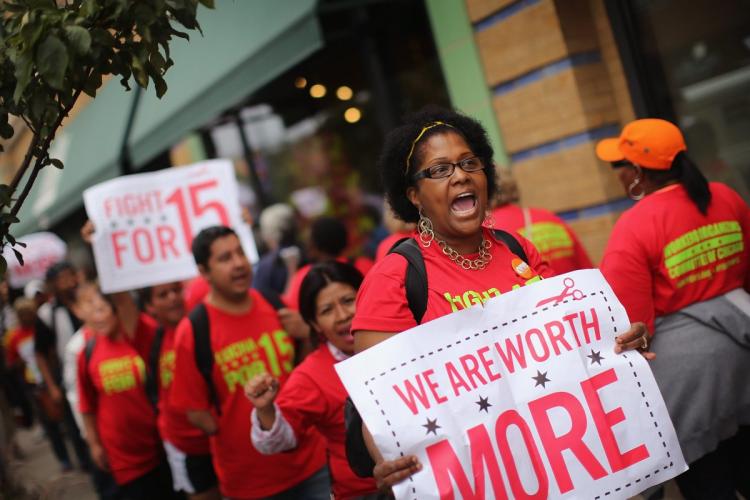Uncategorized
Higher Wages Fuel Income Equality

Continued inaction on an increase of the minimum wage at the federal level hasn’t stopped states and localities from moving on the issue. And last weekend, several officially enacted a higher pay floor that continues a trend across the nation.
Several of the wage hikes were associated with the phasing-in of an eventual $15 minimum wage. In San Francisco and Los Angeles, for example, hourly pay minimums rose to $14 and $12 respectively as part of a gradual rise toward the $15 level, the living wage thresholds that the Teamsters, other unions and worker advocates have been fighting for since 2012.
Elsewhere, the minimum wage rose to $12.50 in the nation’s capital, $12 in San Jose, $11 in Chicago, $10.25 in Oregon and $9.25 in Maryland. Other smaller localities also saw a shift up in wages, led by Bay area city Emeryville, Calif., where the wage floor rose to $15.20 an hour for businesses with more than 56 employees. Those with 55 workers or less must pay at least $14 an hour.
The increases come at a time when such wage hikes have come under fire by some. Late last month, a University of Washington report cast a critical eye on Seattle’s implementation of a $15 minimum wage, saying it had caused a loss of jobs in the city.
In response, advocates of a $15 an hour wage shot back. The Economic Policy Institute, for instance, challenged the findings by saying there were several notable flaws that cast doubt on the report’s results.
“Bold action is needed to reverse decades of wage stagnation that have kept living standards down for low-wage workers,” said economist Ben Zipperer. “Concerns about job loss can be misleading. What’s important is, will low-wage workers be better off with a higher minimum wage? Every piece of credible research points to the answer to that question being yes.”
Sadly, some states are still taking a step back. In Missouri, Republicans in the Legislature voted to preempt St. Louis’ $10 minimum wage more than two years after it took effect, resulting in a 23 percent cut for many low-wage workers in the city. The wage floor in the Show Me State is $7.70.
Successful wage increases have been fueled by workers for several years across the country. That’s because the public knows they are getting slighted by too many big business employers who refuse to raise wages unless forced to do so. And it’s having an effect. While median average hourly earnings grew 1.4 percent for all workers since 2012, the median for the 10th percentile workers – the lowest-paid – rose 7.9 percent in 2014-15 alone, the fastest growth since 1968.
This nation doesn’t exist to merely prop up stock prices. That’s happened for long enough – businesses need to pay their fair share.